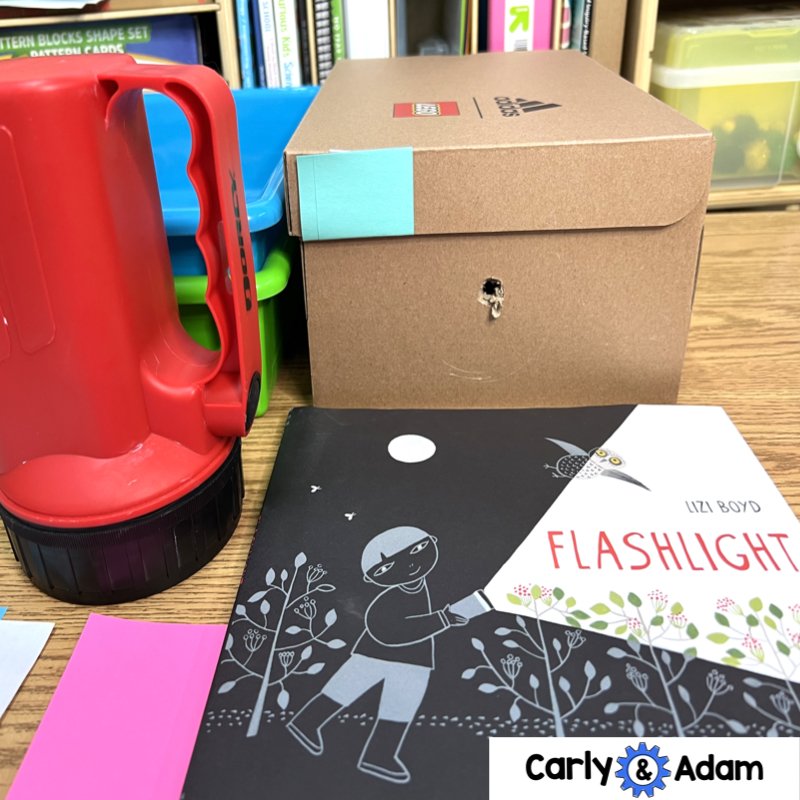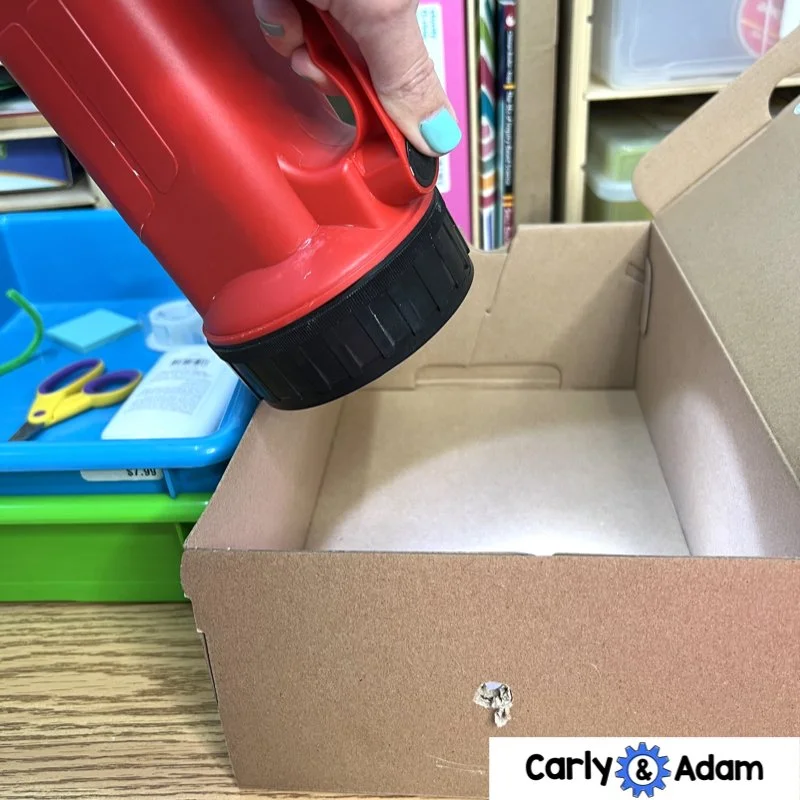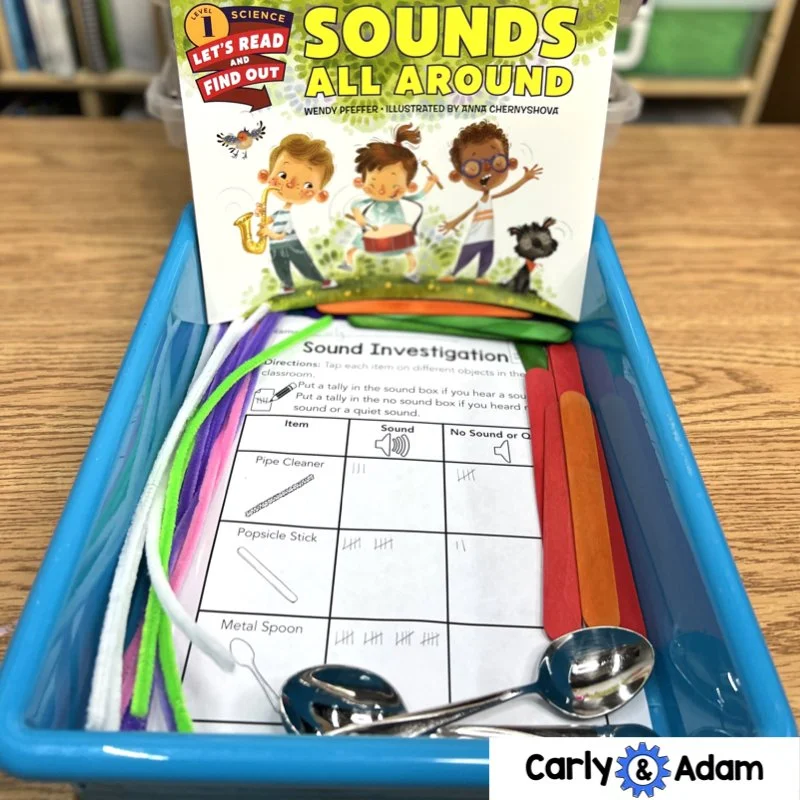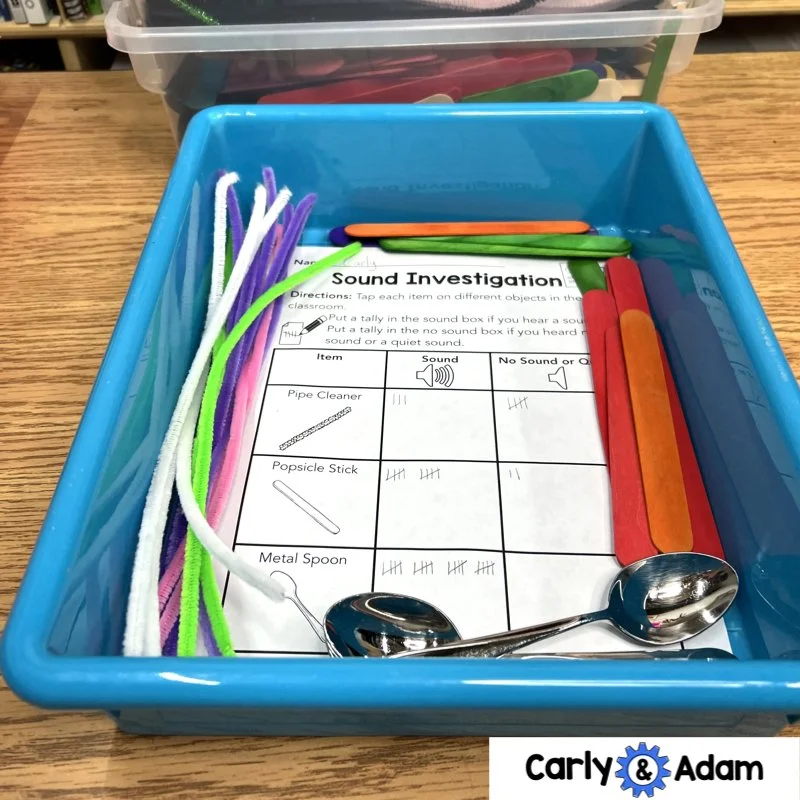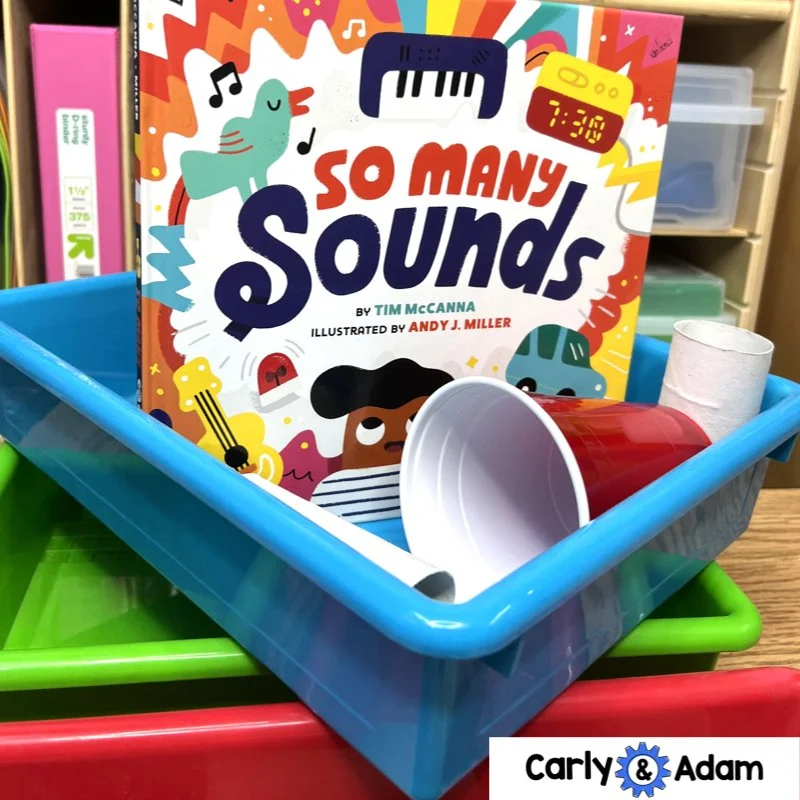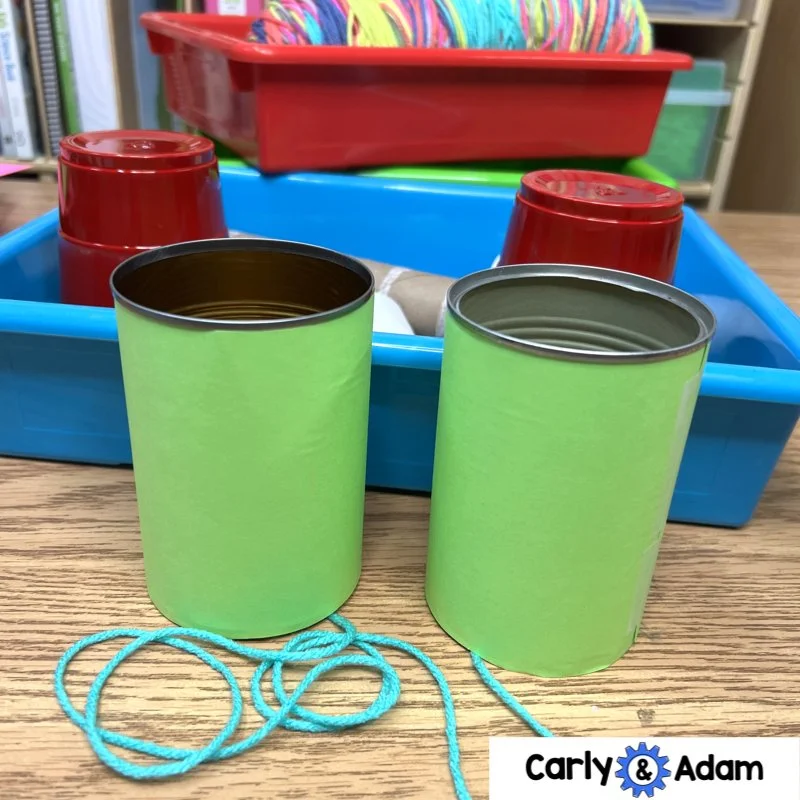The Best Books and STEM Challenges to Teach Light and Sound in 1st Grade
Books are a great way to introduce young learners to different topics. In first grade, students are beginning to learn to read on their own, but they also enjoy a great read aloud.
This post will share four great science-focused picture books. When we use read alouds in the STEM classroom, we can reinforce concepts in science through literature.
4 Read Aloud Books to Teach Light and Sound to Kids
Flashlight by Lizi Boyd
Blackout by John Rocco
Sounds All Around by Wendy Pfeffer
Too Many Sounds by Tim McCanna
All of the books shared are a part of our Next Generation Science Standards (NGSS) curriculum. In physical science, first grade students will explore light and sound. They will build an understanding of how light and sound travel, along with lots of things that make sound and give us light.
Through hands-on activities, students will play with light and sound in ways that will deepen their understanding.
All of these STEM Challenges are included as part of the STEM Teachers Club.
Light
How many different things can you think of that give us light? How does the light reach our eyes? What happens when we don’t have light? These are questions for first graders to explore in the physical science standards.
Two books that introduce first graders to the concept of light are Flashlight by Lizi Boyd and Blackout by John Rocco.
Flashlight
This wordless picture book follows a young boy on an adventure through the night with only a flashlight.
Summary:
In the story, we see the boy explore things in the dark outside of his tent. There are some things that he can see, but there are other things that he doesn't notice because it is too dark. He uses his flashlight to illuminate the things that he cannot see out in the woods. He finds bats, mice, and other creatures. In the end the animals befriend the boy and help him find his way back to his tent.
Science Investigation:
The challenge for this lesson is to investigate light and dark using a pinhole box. Students work with a partner to place different objects in the box.
One partner will choose an object and place it inside the box. The other partner will look inside in the dark.
Can you see anything? What object did your partner place in there? Then, students will use a flashlight to illuminate what is inside the box and record what they see.
For this challenge, students will follow the steps of the scientific method:
Purpose: How can light help us to see in the darkness?
Research: When the box is dark, will we be able to see different objects when looking through
the pinhole? Will using the flashlight help?
Hypothesis: Make a prediction about whether each object can be viewed in the darkness.
Experiment: Your partner will place an item in the box. First, you will look through without the
light. Then you will use your flashlight.
Analysis: Were you able to identify the object in the dark? Was it easier when the flashlight was shining on the object?
Conclusion: Why do you think you got those results?
Blackout
What can you do without electricity? One family finds out during a summer blackout.
Summary: On a hot summer night, the power goes out in a big city. A family struggles with what to do without any electricity. Without any computers, phones, TVs or appliances, they head outside. They see their neighbors and take time to observe the night sky.
During the blackout, the family also used a light source to create shadows. They made shadow puppets and used the light from their flashlights to create different shapes and images.
Science Investigation:
Students will choose different objects that they will try to illuminate. This may create reflections, shadows, or other results. The class will follow the steps of the scientific method as students get ready to begin their investigation.
Purpose: How can we use our flashlights to illuminate different objects?
Research: Choose 3 items that you will illuminate with the lights turned off.
Hypothesis: Make a prediction about what you think will happen
Experiment: Turn the lights out and shine your flashlight on the object.
Analysis: Did it light up? Did you create a shadow?
Conclusion: Why do you think you got those results?
Sound
In first grade, students will also explore sounds. What sounds can we hear? What things around us make different types of sounds? How do the sounds get to our ears? Sounds All Around and So Many Sounds will introduce this science content to students in a hands-on and fun way.
Sounds All Around
This book is a fun exploration of sounds for young learners that is friendly and engaging.
Summary:
Snapping, clapping, or tapping, this book explores different sounds that we hear. Not only does this book invite students to make sounds, but also helps them to understand how different sounds are made. Although we can’t see sound waves, students will learn that it is these vibrations that help carry sounds to our ears. We even use sounds to communicate with others—and so do animals!
Science Investigation:
Students will use the scientific method to explore sounds in a hands-on way.
Purpose: What objects can we use to create vibrations and sounds?
Research: Choose an item to investigate. Then choose an item to create a vibration (something students can strike with). For example, a pencil and a metal pan.
Hypothesis: What do you think will happen when you hit the two together? Will you hear something? Feel something?
Experiment: Try to create a vibration by striking the pencil against the pan.
Analysis: Record what you heard, saw, or felt for each item.Why do you think some created vibrations and others did not?
Conclusion: Share your ideas and show what you learned.
So Many Sounds
This is a great rhyming read-aloud that plays with everyday sounds that kids will love repeating.
Summary:
In the story, there are many sounds to be heard. Some sounds are made by objects or things outside. We can make our own sounds, too.
Some of the sounds in the story are sounds of movement like footsteps or bikes traveling along a path. Other sounds can be made by animals communicating like birds chirping or tweeting.
People use words to communicate, but we can also use sounds.
STEM Challenge:
We are going to use sounds to communicate with one another across a distance. That means that we will use a sound to share information with someone who is further away.
What will our sounds communicate?
What message do we need to send?
This might be a device to send the sounds across a far distance or it might be some other way to communicate using sounds.
Students will use the engineering design process to create a new way to communicate using available recyclable materials. Their design can be a prototype or a working model.
Ask: How might we communicate a message to someone who is across a distance?
Imagine: Think about the ways that people and animals communicate and the sounds they make.
Plan: Sketch out your plan to communicate over a distance.
Create: Use the materials to design a prototype that might help you communicate.
Experiment: Explore with your device. Does it work? Can you communicate with your friend?
Improve: After you try out the device what changes can you make so that it works even better?
Light and sound are important topics for students to learn in science. Connecting science learning to interesting children’s books is a great way to build student understanding in a fun and engaging way.
If you want the full lesson plans, along with access to our full NGSS-aligned curriculum, join the STEM Teachers Club Membership today!
We hope you have found this blog post helpful. To stay connected with Carly and Adam's teaching tips and classroom freebies be sure to follow us on Facebook, Pinterest, Teachers Pay Teachers, and subscribe to our blog!

